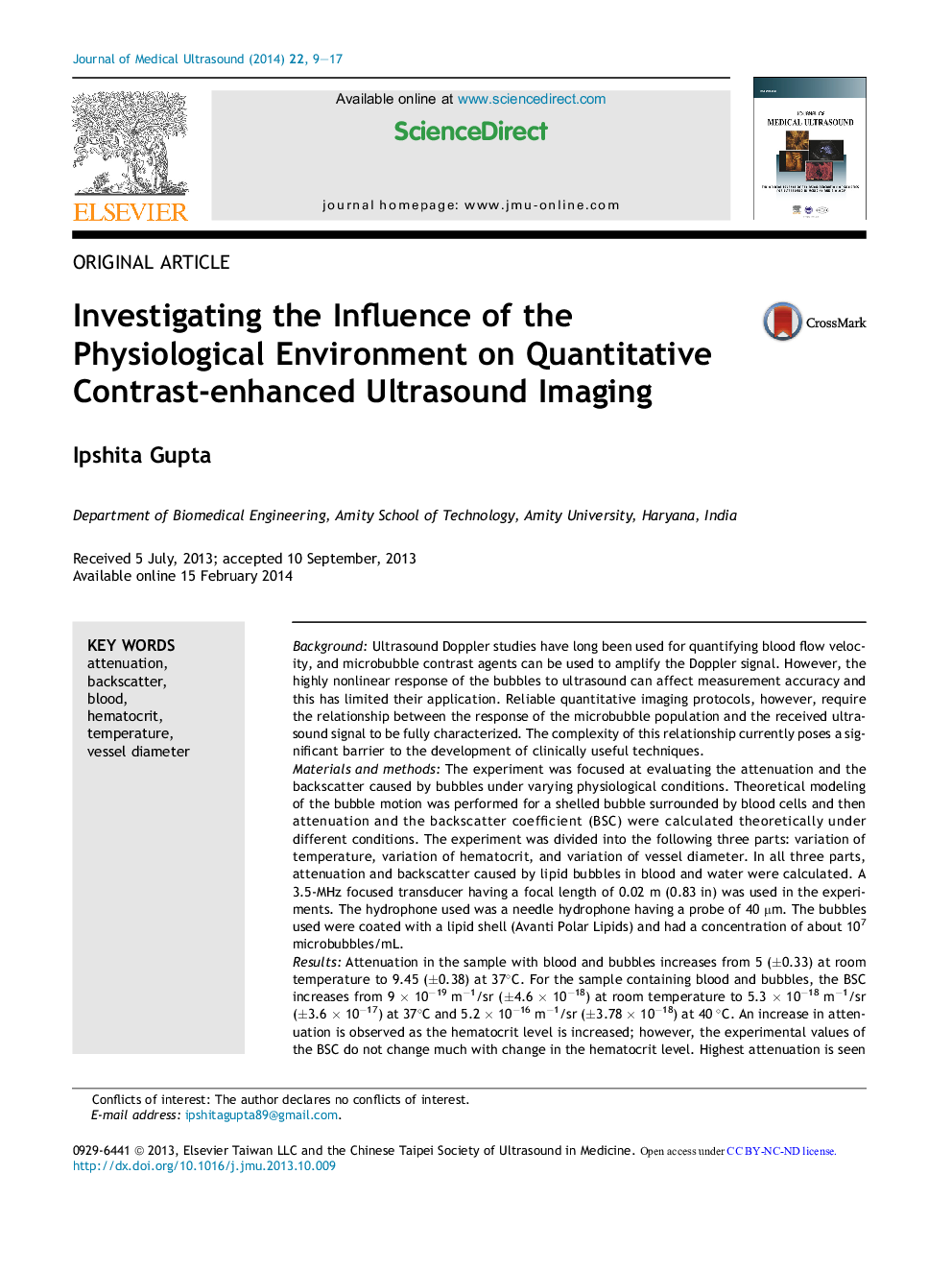| کد مقاله | کد نشریه | سال انتشار | مقاله انگلیسی | نسخه تمام متن |
|---|---|---|---|---|
| 4233013 | 1282703 | 2014 | 9 صفحه PDF | دانلود رایگان |
BackgroundUltrasound Doppler studies have long been used for quantifying blood flow velocity, and microbubble contrast agents can be used to amplify the Doppler signal. However, the highly nonlinear response of the bubbles to ultrasound can affect measurement accuracy and this has limited their application. Reliable quantitative imaging protocols, however, require the relationship between the response of the microbubble population and the received ultrasound signal to be fully characterized. The complexity of this relationship currently poses a significant barrier to the development of clinically useful techniques.Materials and methodsThe experiment was focused at evaluating the attenuation and the backscatter caused by bubbles under varying physiological conditions. Theoretical modeling of the bubble motion was performed for a shelled bubble surrounded by blood cells and then attenuation and the backscatter coefficient (BSC) were calculated theoretically under different conditions. The experiment was divided into the following three parts: variation of temperature, variation of hematocrit, and variation of vessel diameter. In all three parts, attenuation and backscatter caused by lipid bubbles in blood and water were calculated. A 3.5-MHz focused transducer having a focal length of 0.02 m (0.83 in) was used in the experiments. The hydrophone used was a needle hydrophone having a probe of 40 μm. The bubbles used were coated with a lipid shell (Avanti Polar Lipids) and had a concentration of about 107 microbubbles/mL.ResultsAttenuation in the sample with blood and bubbles increases from 5 (±0.33) at room temperature to 9.45 (±0.38) at 37°C. For the sample containing blood and bubbles, the BSC increases from 9 × 10−19 m−1/sr (±4.6 × 10−18) at room temperature to 5.3 × 10−18 m−1/sr (±3.6 × 10−17) at 37°C and 5.2 × 10−16 m−1/sr (±3.78 × 10−18) at 40 °C. An increase in attenuation is observed as the hematocrit level is increased; however, the experimental values of the BSC do not change much with change in the hematocrit level. Highest attenuation is seen in the 200-μm vessel of nearly 35 dB/cm (±5) in a sample containing blood and bubbles. The backscatter for the sample containing blood and bubbles increases from 2.5 × 10−19 m−1/sr (±2.8 × 10−20) in the 200-μm vessel to 5.07 × 10−17 m−1/sr (±3.9 × 10−18) in the 4-mm vessel.ConclusionIt has been re-established that as temperature increases from room temperature to body temperature, considerable signal is lost and attenuation and backscatter increase with temperature. Blood cells surrounding the bubbles do alter the attenuation; however, they do not have any effect on the backscatter by the bubbles. This result is different from previous studies, and therefore, more work must be done to validate these results in a more sophisticated experimental setup. Confinement of bubbles inside small vessels affects both attenuation and backscatter. Hence, while designing experiments, care must be taken about choosing the vessels in the body through which the bubble will travel and the parameters must be measured accordingly.
Journal: Journal of Medical Ultrasound - Volume 22, Issue 1, March 2014, Pages 9–17
